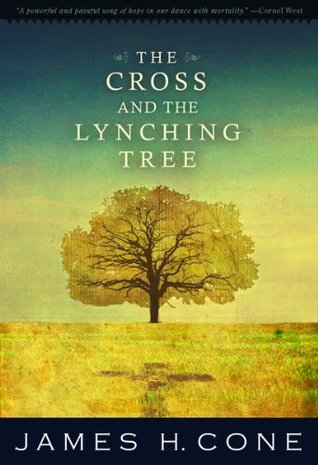More on this book
Community
Kindle Notes & Highlights
Unfortunately, during the course of 2,000 years of Christian history, this symbol of salvation has been detached from any reference to the ongoing suffering and oppression of human beings—those whom Ignacio Ellacuría, the Salvadoran martyr, called “the crucified peoples of history.” The cross has been transformed into a harmless, non-offensive ornament that Christians wear around their necks.
The Newark and Detroit riots in July 1967 and the assassination of Martin Luther King Jr. in April 1968 were the events that shook me out of my theological complacency, forcing me to realize the bankruptcy of any theology in America that did not engage the religious meaning of the African American struggle for justice.
The cross helped me to deal with the brutal legacy of the lynching tree, and the lynching tree helped me to understand the tragic meaning of the cross.
There was no place for the proud and the mighty, for people who think that God called them to rule over others.
Those of us who confront the brutalities in black history must be self-critical regarding the church as well as the juke joint, the spirituals, and the blues. We cannot be too sure of ourselves—whether we sing the blues or spirituals or both.
The conspicuous absence of the lynching tree in American theological discourse and preaching is profoundly revealing, especially since the crucifixion was clearly a first-century lynching.
The best that humans can strive for is justice, which is love approximated, a balance of power among competing groups.
The wise, the mighty, and the noble are condemned because their status in society tempts them to think too highly of their knowledge, power, and heritage.
This suggests why it is so hard for whites and blacks to talk about white supremacy; even among progressive intellectuals like Niebuhr, there is too little empathy regarding black suffering in the white community.
What most whites call “integration” (or in the language of today, diversity) is often merely “tokenism.” There is very little justice in any educational institution where black presence is less than 20 percent of the faculty, students, and board members.
Can American Christians see the reality of Jesus’ cross without seeing it as the lynching tree?
King could have opened Niebuhr’s eyes to see the lynching tree as Jesus’ cross in America. White theologians do not normally turn to the black experience to learn about theology.
Whatever we may say about the limits of King’s perspective on the cross and redemptive suffering, he did not legitimize suffering. On the contrary, he tried to end it, sacrificing his own life for the cause of others.
In The Souls of Black Folk and other essays, Du Bois condemned “white religion” as an “utter failure.” “A nation’s religion is its life, and as such white Christianity is a miserable failure.”
One cannot correctly understand the black religious experience without an affirmation of deep faith informed by profound doubt. Suffering naturally gives rise to doubt. How can one believe in God in the face of such horrendous suffering as slavery, segregation, and the lynching tree? Under these circumstances, doubt is not a denial but an integral part of faith.
“It is exceedingly doubtful if lynching could possibly exist under any other religion than Christianity,” he wrote. “Not only through tacit approval and acquiescence has the Christian Church indirectly given its approval to lynch-law . . . , but the evangelical Christian denominations have done much towards creation of the particular fanaticism which finds its outlet in lynching.”
Unlike preachers and theologians, artists and writers were not bound by the inherited, static religious tradition of white supremacists. Black artists were defined by their creative resistance against an oppressive status quo. They were free to say anything that gave black people liberating visions of their humanity.
Indeed, it was white slaveholders, segregationists, and lynchers who defined the content of the Christian gospel.
Black artists are prophetic voices whose calling requires them to speak truth to power. Their expressions are not controlled by the institutions of the church. More than anyone, artists demonstrate our understanding of the need to represent the beauty and the terror of our people’s experience.
Unfortunately, the powerful image of “Christ as a Black Woman” has been left out of our spiritual and intellectual imagination, needing further theological development.
God was the one reality that whites could not control and whose presence was found in unexpected places, doing surprising things.
“The nation cannot profess Christianity,” Wells said in an essay, “which makes the golden rule its foundation stone, and continue to deny equal opportunity for life, liberty and the pursuit of happiness to the black race.”
All of them were silent, as if the meaning of the Christian gospel for America had nothing to do with segregation and lynching.
“Our American Christians are too busy saving the souls of white Christians from burning in hellfire to save the lives of black ones from present burning in fires kindled by white Christians.”
While it has often been said that the civil rights movement was a religious movement and led by male ministers, that was only partly true. The civil rights movement was also a women’s movement.
Yes, in the sense that this was the America that blacks had experienced, but no, in the sense that we should not accept this America; we would not and could not be satisfied until justice was made a reality in the land.
The cross sustained them—not for suffering but in their resistance to it.
Perhaps nothing about the history of mob violence in the United States is more surprising than how quickly an understanding of the full horror of lynching has receded from the nation’s collective historical memory. —W. Fitzhugh Brundage


